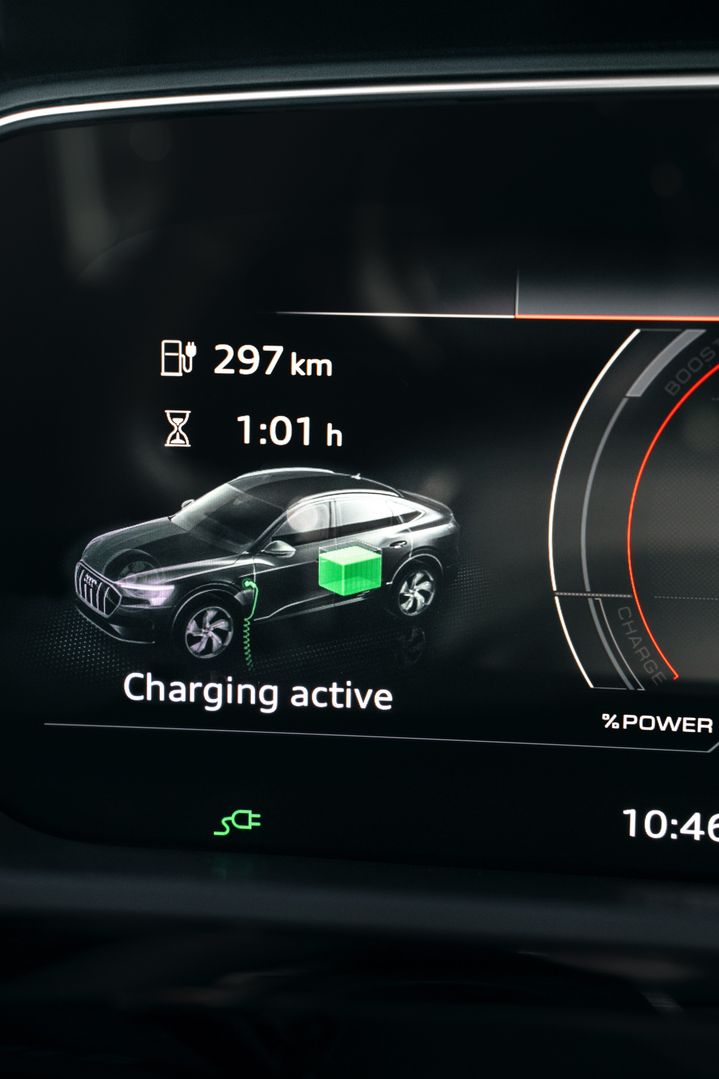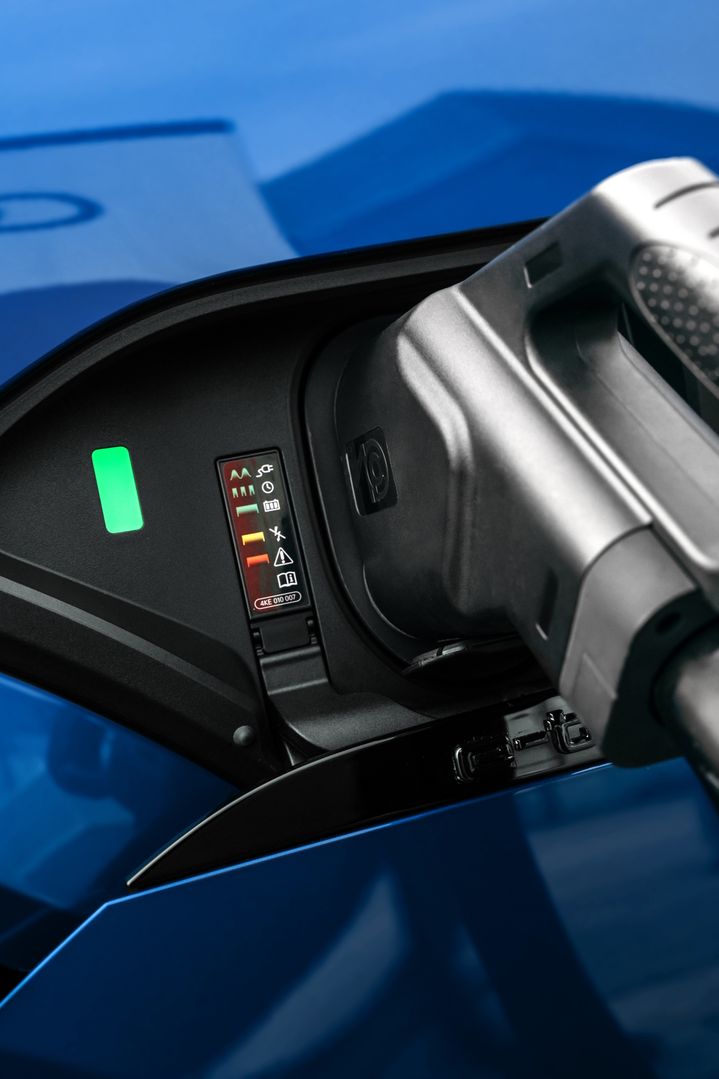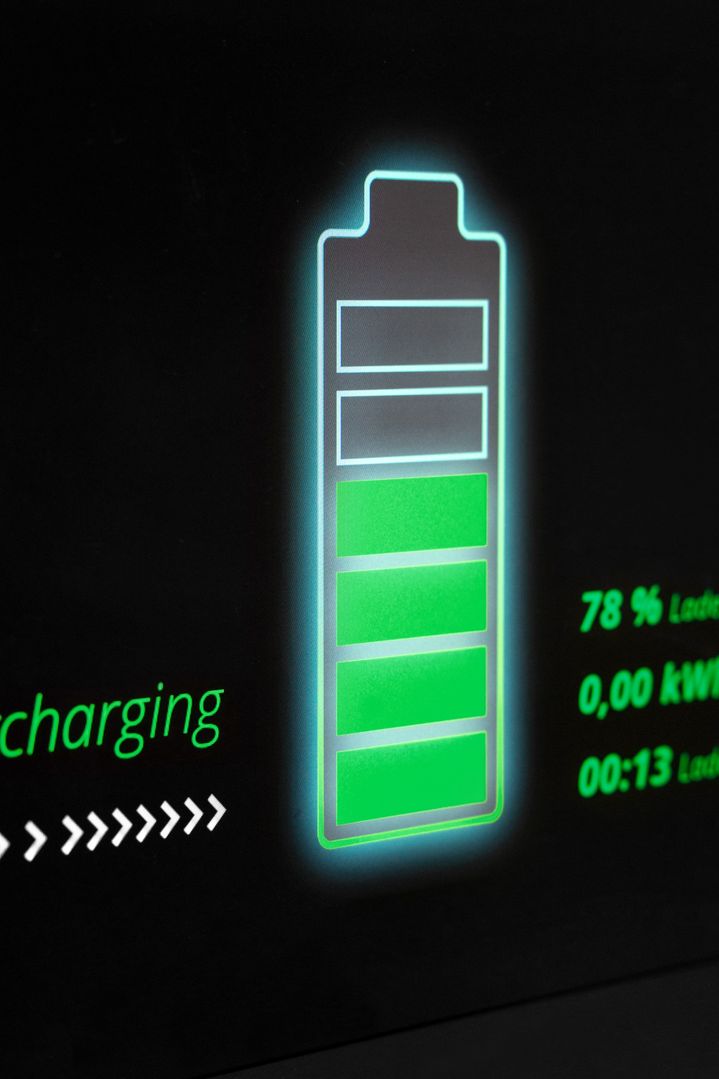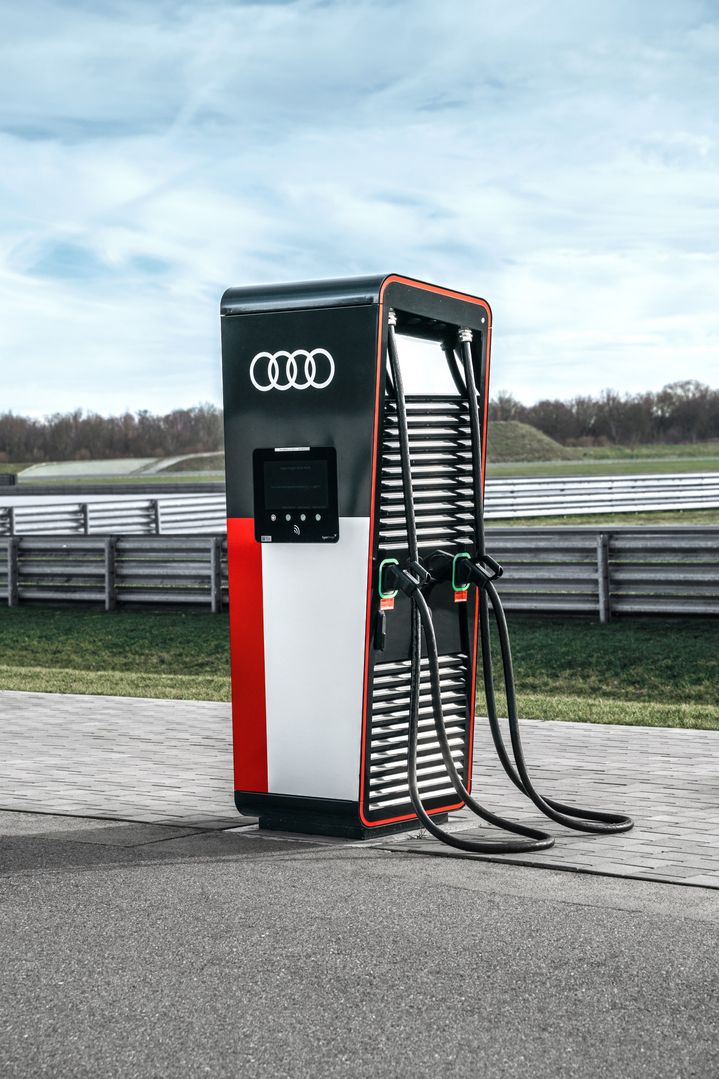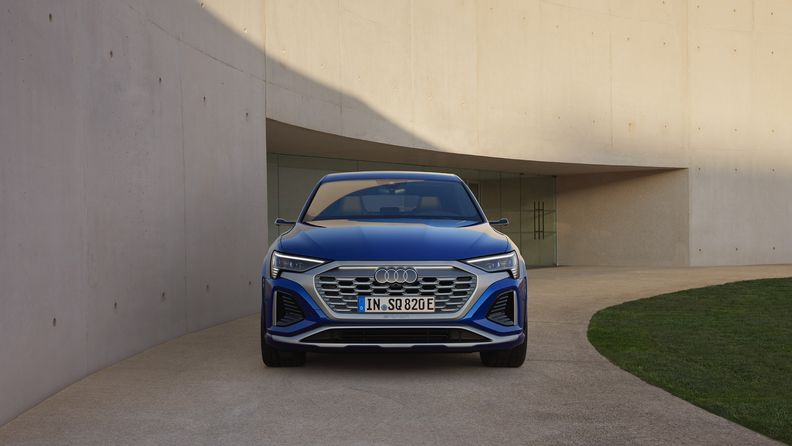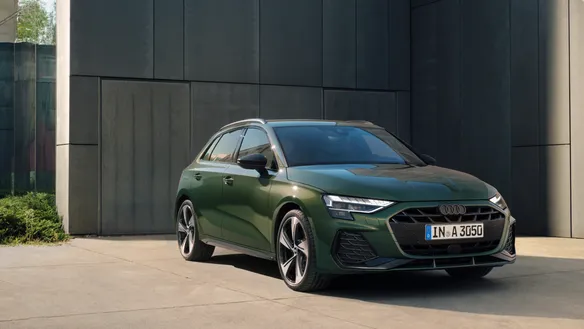Intelligent thermal management for fast charging
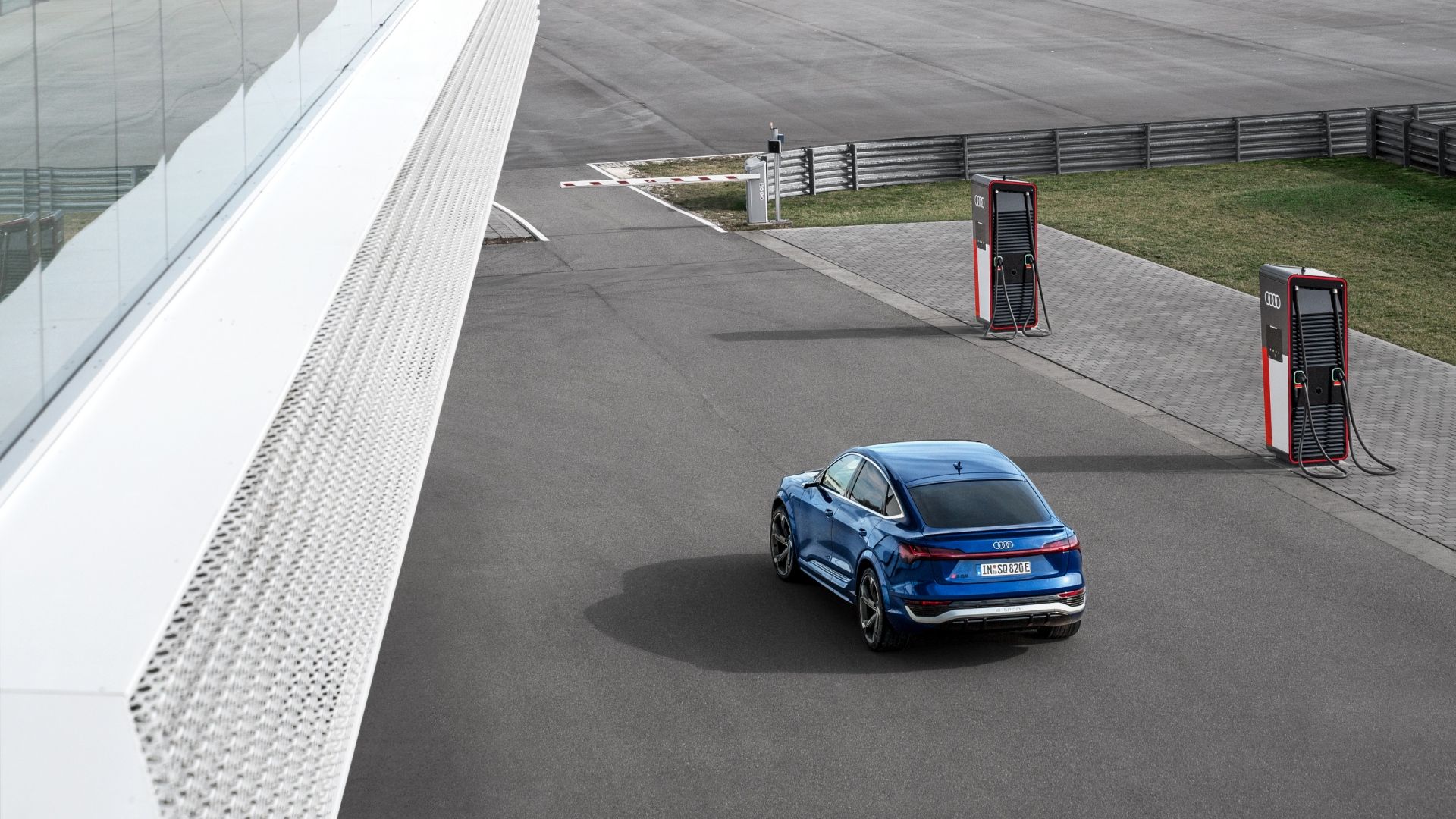
Audi SQ8 Sportback e-tron: Power consumption (combined) in kWh/100 km: 27.2–24.4CO₂ emissions (combined) in g/km: 0CO₂ emission class: A
Audi SQ8 Sportback e-tron: Power consumption (combined) in kWh/100 km: 27.2–24.4CO₂ emissions (combined) in g/km: 0CO₂ emission class: A
A long range is one of the key requirements that customers have of an electric vehicle. But just as important is the following question, especially when going on vacation or on long-distance business trips: How quickly can the high-voltage battery be recharged?
We all know that acceleration says much more about the driving experience of a vehicle than the possible maximum speed, hence the charging curve for fast charging is more important than the maximum charging power.
The Audi Q8 e-tron scores particularly well in this field: its charging curve is unique in the competitive environment. It remains at a high level – even when charging passes 80 percent, the charging power will still be high.
The high-voltage battery system of the new Audi Q8 e-tron operates at a nominal voltage of 396 volts. In the Audi SQ8 e-tron, for example, the battery has a storage capacity of 106 kWh (net) or 114 kWh (gross).
Because a higher battery capacity enables more charging power, the Audi SQ8 e-tron achieves a maximum charging power of up to 170 kW at the CCS (Combined Charging System) fast charger.
During a charging stop, the vehicle can thus be charged from 10 to 80 percent in approximately 31 minutes. And it takes just ten minutes at a High Power Charging (HPC) station for the Audi SQ8 e-tron to reach a range of up to 104 kilometres. These values determined according to WLTP apply equally to the Audi SQ8 e-tron SUV and Sportback.
Audi Q8 e-tron: Power consumption (combined) in kWh/100 km: 25.3–20.1CO₂ emissions (combined) in g/km: 0CO₂ emission class: A
Audi SQ8 e-tron: Power consumption (combined) in kWh/100 km: 28–25.2CO₂ emissions (combined) in g/km: 0CO₂ emission class: A
Audi Q8 e-tron: Power consumption (combined) in kWh/100 km: 25.3–20.1CO₂ emissions (combined) in g/km: 0CO₂ emission class: A
Audi SQ8 e-tron: Power consumption (combined) in kWh/100 km: 28–25.2CO₂ emissions (combined) in g/km: 0CO₂ emission class: A
The basis for good performance of an electric vehicle during driving and charging is a sophisticated high-voltage thermal management system. This ensures that the battery of the Audi Q8 e-tron quickly reaches its optimum efficiency range of 25 to 35 degrees Celsius (77 to 77 degrees Fahrenheit) and remains within this temperature range while driving – from cold starts in winter to fast highway trips on hot summer days.
For the lithium-ion battery to reliably provide its full power over a longer period of time and at high outside temperatures, even during sporty driving, it is kept within the ideal temperature range by a liquid-based cooling system.
The intelligent thermal management system comprises four circuits that are coupled depending on the operating state and driving situation and permanently optimise the temperature status of relevant system components: it cools the e-machines including their rotors, the power electronics and the charger. In addition, the thermal management system of the Audi Q8 e-tron regulates the temperature in the interior as well as that of the high-voltage battery.
The cooling system is separate from the battery cell compartment and consists of flat aluminium extrusions divided into small chambers. Heat is exchanged between the battery cells and the cooling system located below via a special material with good thermal conductivity and the consistency of a rubber mat, which is pressed under each cell module and conducts the waste heat evenly across the battery housing into the coolant.
22 litres of coolant circulate in the approximately 40-meter-long coolant pipes of the Audi Q8 e-tron. In addition, the standard heat pump efficiently uses the unavoidable waste heat from the electric motors to heat and air condition the interior; up to 3 kW of the actual power loss is utilised in this way. The heat pump can thus contribute to range advantages in everyday operation.
Audi Q8 e-tron: Power consumption (combined) in kWh/100 km: 25.3–20.1CO₂ emissions (combined) in g/km: 0CO₂ emission class: A
Audi Q8 e-tron: Power consumption (combined) in kWh/100 km: 25.3–20.1CO₂ emissions (combined) in g/km: 0CO₂ emission class: A
Intelligent thermal management is also a prerequisite for high and reproducible performance at the fast-charging station. This is because the high-voltage battery must be in an ideal temperature range for maximum charging performance and minimum charging time. If necessary, the high-voltage battery of the Audi e-tron GT quattro and the Audi RS e-tron GT is preconditioned to the right temperature range.
For active preconditioning, the thermal management system of the Audi e-tron GT quattro and the Audi RS e-tron GT is networked with the navigation system. If the driver has selected an HPC station as a destination, the cooling of the battery is intensified while the vehicle is still approaching so that it can be charged as quickly as possible at the charging station. If the battery is still very cold shortly after starting in winter, it is warmed up for fast charging.
On the other hand, the coolant circuit also helps with cooling, because rapid DC charging can heat the battery up to 50 degrees Celsius. The heat generated by the battery during charging is dissipated to the coolant circuit. Even when the vehicle is stationary, the open, controllable cooling air inlet and activated fan ensure optimum air flow to the condenser.
Intelligent thermal management also contributes to the longevity of the battery. The progressive aging process of the battery is counteracted by the control software for the charging process. The software adjusts the currents and voltages according to age and remaining capacity so that the battery is not overloaded during charging.
Audi e-tron GT quattro: Power consumption (combined) in kWh/100 km: 21.6–19.6CO₂ emissions (combined) in g/km: 0CO₂ emission class: A
Audi RS e-tron GT: Power consumption (combined) in kWh/100 km: 21.1–18.4CO₂ emissions (combined) in g/km: 0CO₂ emission class: A
Audi e-tron GT quattro: Power consumption (combined) in kWh/100 km: 21.6–19.6CO₂ emissions (combined) in g/km: 0CO₂ emission class: A
Audi RS e-tron GT: Power consumption (combined) in kWh/100 km: 21.1–18.4CO₂ emissions (combined) in g/km: 0CO₂ emission class: A
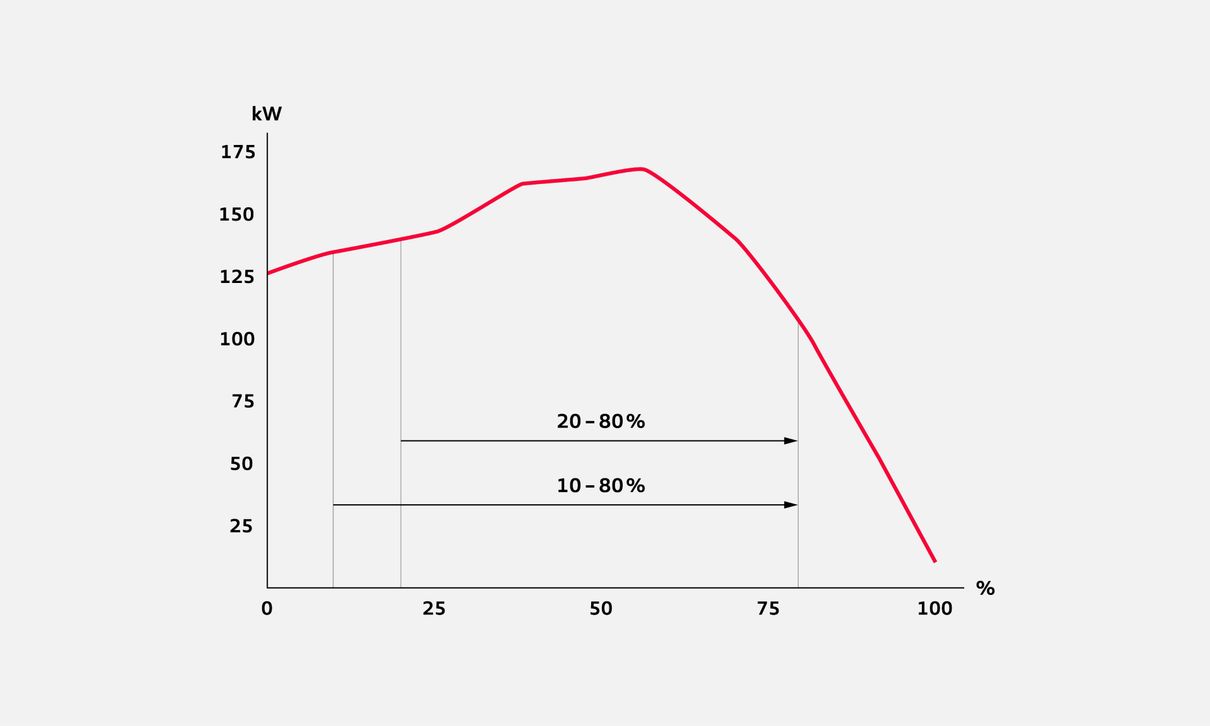
Audi SQ8 e-tron: Power consumption (combined) in kWh/100 km: 28–25.2CO₂ emissions (combined) in g/km: 0CO₂ emission class: A
Audi SQ8 e-tron: Power consumption (combined) in kWh/100 km: 28–25.2CO₂ emissions (combined) in g/km: 0CO₂ emission class: A
The high system voltage of around 800 volts in the Audi e-tron GT quattro and the Audi RS e-tron GT enables strong continuous power and shortens the charging time. At a direct current (DC) charging station with 800 volts, for example in the European fast charging network from Ionity, the Audi e-tron GT quattro achieves a peak charging power of up to 270 kW. Under ideal conditions, it can thus recharge energy for a distance of up to 100 kilometres in just over five minutes; a charge from 5 to 80 percent SoC (State of Charge) takes only 22.5 minutes under ideal conditions.
With such short charging stops, you top up the battery in less time than it takes to consume this energy on your way to your destination.
Audi e-tron GT quattro: Power consumption (combined) in kWh/100 km: 21.6–19.6CO₂ emissions (combined) in g/km: 0CO₂ emission class: A
Audi RS e-tron GT: Power consumption (combined) in kWh/100 km: 21.1–18.4CO₂ emissions (combined) in g/km: 0CO₂ emission class: A
Audi e-tron GT quattro: Power consumption (combined) in kWh/100 km: 21.6–19.6CO₂ emissions (combined) in g/km: 0CO₂ emission class: A
Audi RS e-tron GT: Power consumption (combined) in kWh/100 km: 21.1–18.4CO₂ emissions (combined) in g/km: 0CO₂ emission class: A
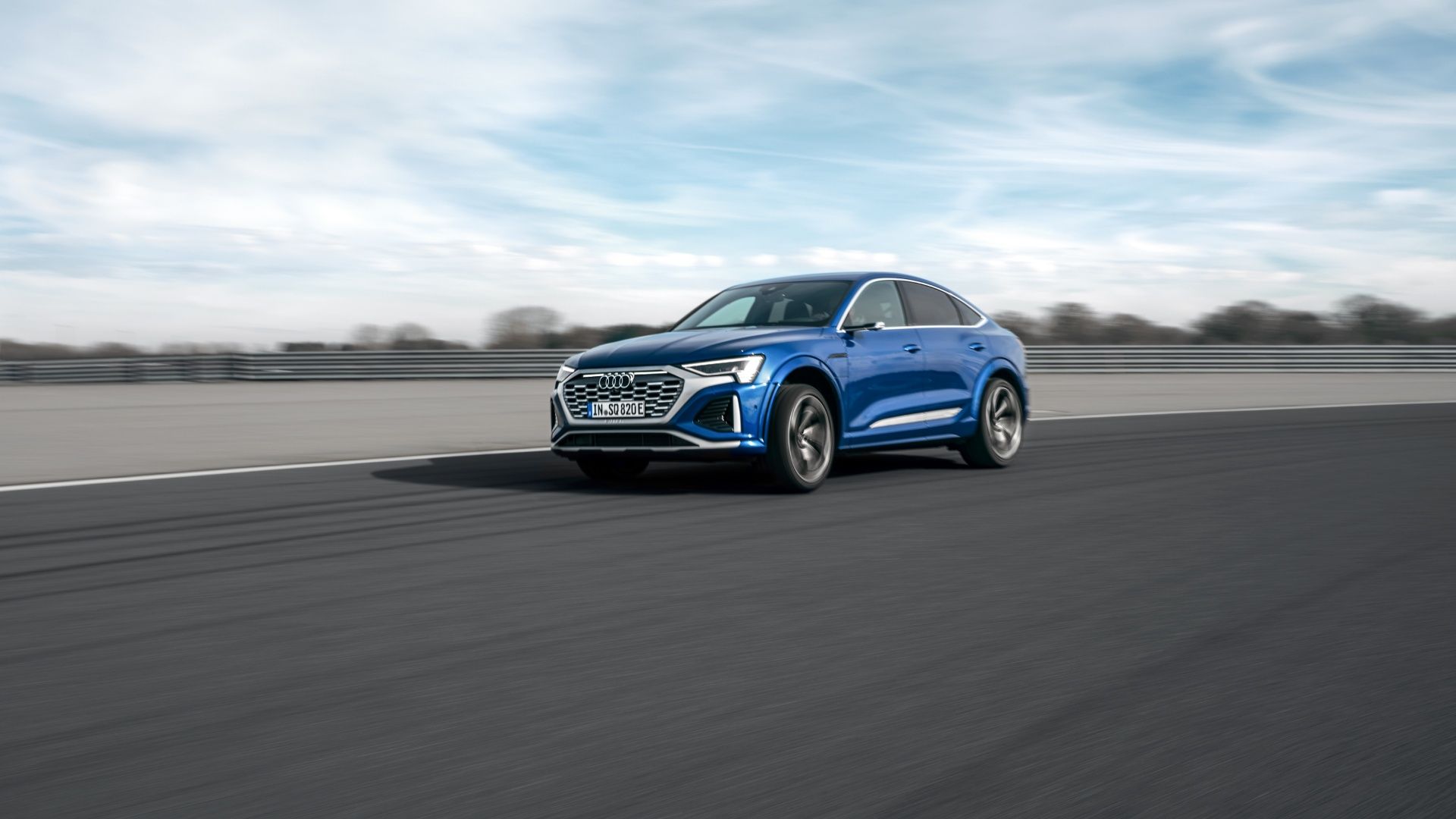
Audi SQ8 Sportback e-tron: Power consumption (combined) in kWh/100 km: 27.2–24.4CO₂ emissions (combined) in g/km: 0CO₂ emission class: A
Audi SQ8 Sportback e-tron: Power consumption (combined) in kWh/100 km: 27.2–24.4CO₂ emissions (combined) in g/km: 0CO₂ emission class: A
